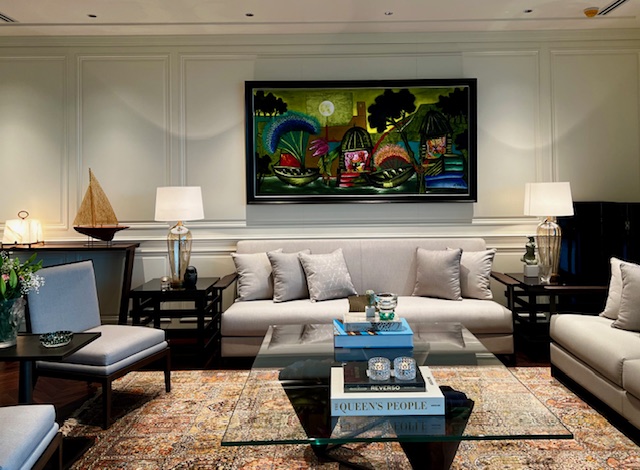In the vibrant landscape of Indian art, an emerging movement is captivating audiences and challenging traditional notions of creativity; the emergence of New Media Art is a response to the rapid technological advancements and the changing socio-cultural landscape. This dynamic genre transcends conventional mediums like paint and sculpture, embracing technology as both a tool and a canvas. With increasing access to digital tools and platforms, artists are pushing the boundaries of expression, infusing traditional Indian aesthetics with contemporary digital techniques to create immersive experiences that resonate with global audiences.

One prime example of this avant-garde approach is the work of Shilo Shiv Suleman, an Indian artist renowned for her interactive installations blending art and technology. Suleman's ‘Pulse and Bloom’ installation was showcased at the Burning Man Festival, in 2014. Incorporating pulse sensors and light, the installation offers participants a visually immersive experience of unity. By placing a hand on a flower, individuals can witness their heartbeat visualised, while the interaction of two individuals results in a merging of heartbeats, symbolising a profound connection. Inspired by research demonstrating the synchronisation of heartbeats through prolonged eye contact and synchronised breathing, Pulse and Bloom invites participants to engage in a shared, transcendent experience. Suleman's work embodies the essence of New Media Art, offering a sensory experience that transcends the confines of a static canvas.
Another trailblazer in the Indian New Media Art scene is Raqs Media Collective, a group of artists, Monica Narula, Jeebesh Bagchi and Shuddhabrata Sengupta, known for their thought-provoking multimedia installations. Their project ‘Passwords for Time Travel,’ selected for The Artists Film International 2020 is a composition consisting of a series of video clips interwoven with text overlays introducing a collection of innovative terms that blend elements of science and spirituality, envisioning a language of the future. These hybrid words, such as 'Clusterrestial', 'Abracadastral', and 'Dronosapien', merge the mysterious allure of incantations with the exactitude of dictionary definitions. Set against backdrops of landscapes, urban environments, and low-fidelity digital visuals, the imagery serves to elucidate the various connotations of the text, constructing an imagined lexicon poised for future discourse.

Internationally, artists like Refik Anadol are pushing the boundaries of New Media Art with groundbreaking projects that redefine the relationship between art and artificial intelligence. Machine Hallucinations: The Sphere mesmerises audiences with immersive AI-driven narratives of light, movement, and colour. Anadol's AI Data Sculptures blend vivid pigments, shapes, and patterns to create a collective, meditative experience, simulating the rhythms of various environments and prompting viewers to contemplate alternative realities shaped by unseen data movements. Since its inception during his 2016 Google AMI Residency, Anadol has utilised machine intelligence, including DCGAN, PGAN, StyleGAN, and Generative AI algorithms, to reveal hidden layers of our external realities through his ongoing exploration of data aesthetics.

In India, however, New Media Art is not confined to gallery spaces but also finds expression in public installations that engage with social and environmental issues. For instance, Graviky Labs, founded in 2016 by Kaushik and Anirudh Sharma, merges technology, art, and creativity to tackle global challenges like air pollution. The concept sparked when Sharma, during his post-graduate studies at the MIT Media Lab in the US, experienced the pollution in Delhi firsthand.
This inspired them to develop industrial-grade inks and paints from sequestered PM 2.5 and PM 10 pollution, collaborating with small and medium factories in North India. Their products, such as Air-Ink markers, have garnered demand from developed economies and are exclusively sold at institutions like the Cooper Hewitt Museum in New York. With over 1000 artists in 45 countries utilizing Air-Ink and more than 12,000 pens shipped to date, Graviky Labs aims to expand its sustainability efforts into industries like print, packaging, and fashion.
Furthermore, India is witnessing an exciting diversification and evolution in this space. For example, the work of Indian artist Raghava KK utilises AI technology to create art experiences. Raghava unveiled his freshest creation, 'The Impossible Bouquet 2023,' at the Gujral Foundation in New Delhi. This series delves into the realm of digital image creation, where Raghava engages in a captivating dialogue with artificial intelligence. Through this interaction, he delves into the evolving landscape of digital tools, envisioning a novel genre where artworks are born from the collaborative efforts of humans and machines.

Moreover, New Media Art in India is not limited to only visual mediums but extends to sound, performance, and interactive installations. For instance, the composer and sound artist Geeta Dayal merges traditional Indian music with electronic soundscapes, creating mesmerising auditory experiences that challenge conventional notions of harmony and rhythm. In the realm of performance art, several artists have been integrating live video feeds and social media interactions into their durational performances, blurring the boundaries between the performer and the audience in real-time.

As digital technologies become more accessible and integrated into everyday life in India, New Media Art is also becoming increasingly decentralised and democratised. Platforms like Instagram, YouTube, and TikTok are not only avenues for self-expression but also fertile ground for artistic experimentation. Emerging artists from diverse backgrounds are leveraging these platforms to create interactive digital artworks, collaborate with peers, and reach global audiences. This democratisation of the art-making process is fostering a vibrant and inclusive ecosystem where innovation thrives, and traditional hierarchies are challenged.
Furthermore, the advent of artificial intelligence (AI) and machine learning is opening up new avenues for exploration in New Media Art. Indian artists are harnessing AI algorithms to generate dynamic visuals, compose music, and even choreograph dance performances. Different types of projects use machine learning models to create intricate patterns inspired by traditional Indian folk art, showcasing how technology can be harnessed to preserve and innovate cultural heritage. As AI continues to evolve, it is likely to become an integral tool for artists seeking to push the boundaries of creativity and engage with contemporary issues in novel ways.


Leave a Comment